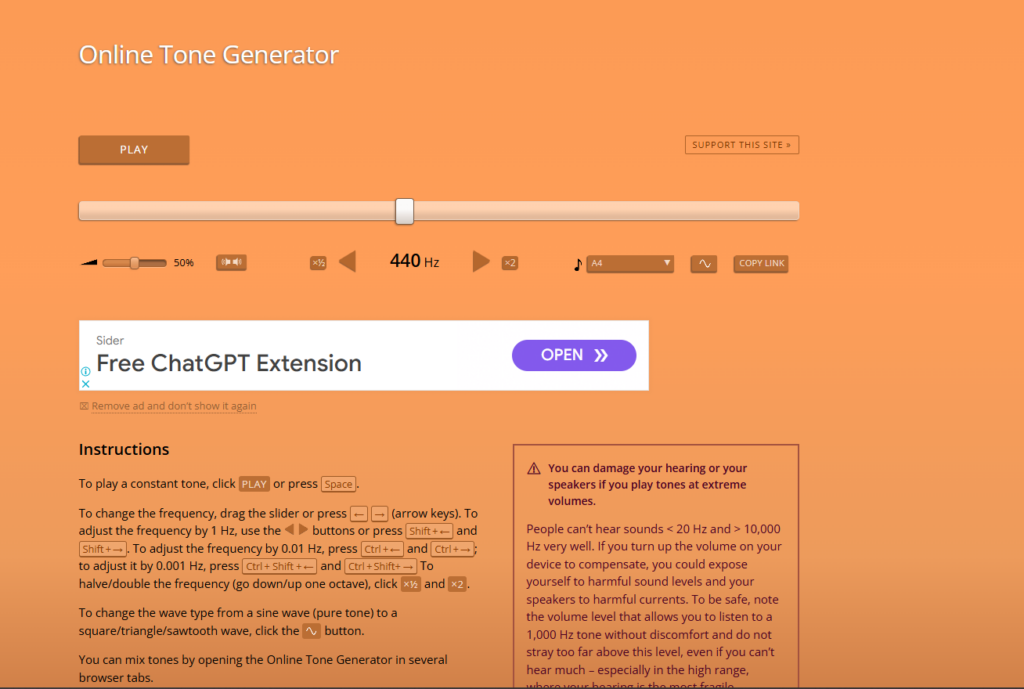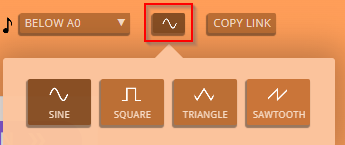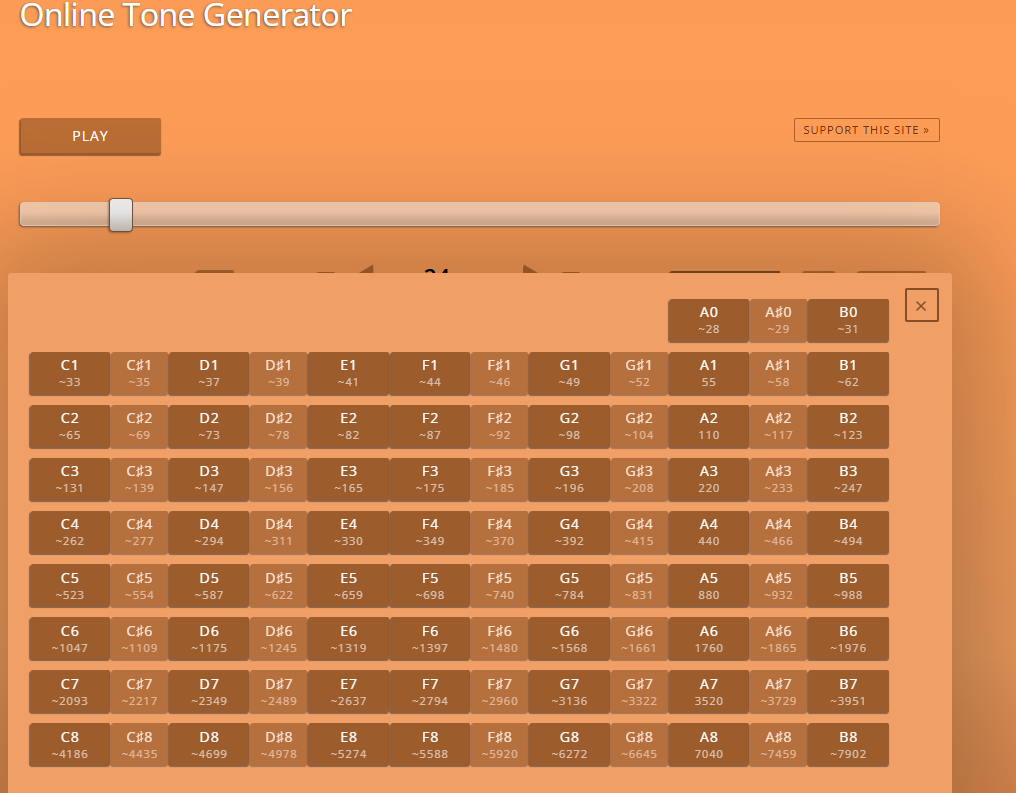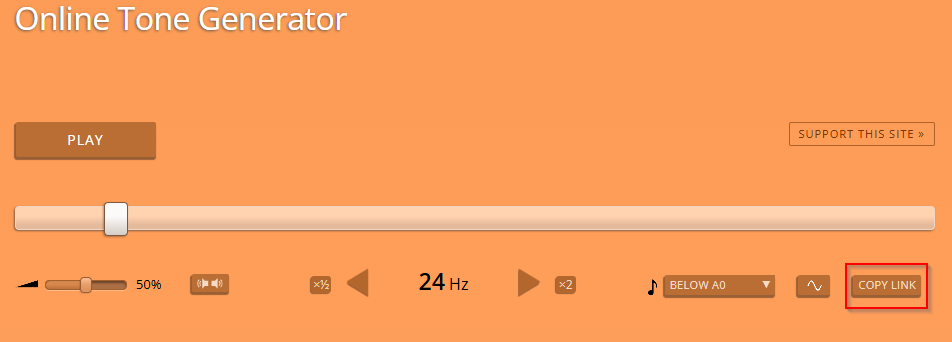In an age where complex software often dominates, the simplicity and effectiveness of tools like the Szynalski Online Tone Generator stand out. This free web-based utility, accessible at https://www.szynalski.com/tone-generator, offers a straightforward way to produce pure sine, square, triangle, and sawtooth waves across a wide frequency spectrum.
At its core, the Szynalski Online Tone Generator allows users to generate specific audio frequencies, from a low of 1 Hz up to over 20,000 Hz, the approximate upper limit of human hearing. The interface is intuitive, featuring a slider for easy frequency adjustment and buttons to fine-tune the frequency by 1 Hz or even 0.001 Hz increments.
Users can also quickly halve or double the frequency, moving down or up an octave. The ability to select different waveforms further enhances its utility, allowing for the generation of tones with distinct sonic characteristics.
To begin using, all you have to do is go to the website. There is nothing to download or to sign-up for.

Use the wave button to change the wave type from sine wave to square/sawtooth/triangle wave.

Drag the slider to generate the desired frequency sound and fine tune it with the note selector.


Use the PLAY button to hear the sound. You can also share your customized frequency as an audio link by clicking the COPY LINK button.


Here are a couple of use cases that highlight the practical benefits of this accessible online tool:
Use Case 1: Acoustic Experimentation and Education
It is an invaluable asset for anyone looking to explore the physics of sound, whether in a classroom setting or for personal curiosity. Its ability to generate precise frequencies makes it ideal for demonstrations and experiments related to resonance, wave interference, and the properties of different sound waves.
Scenario: A high school physics teacher wants to demonstrate the concept of resonance to their students using simple materials.
How the Tone Generator Helps:
Finding Resonant Frequencies: The teacher can use the Szynalski Tone Generator to produce a continuous sine wave. By placing a tuning fork or a glass of water near a speaker playing the tone and slowly sweeping through frequencies, students can observe how the objects vibrate strongly when the generated frequency matches their natural resonant frequency. This provides a clear, audible, and visible demonstration of resonance.
Exploring Waveforms: The teacher can switch between sine, square, triangle, and sawtooth waves to demonstrate how different waveforms sound and how they are constructed from fundamental frequencies and harmonics. This helps students understand the concept of timbre and how it relates to the harmonic content of a sound.
Doppler Effect Demonstrations: By playing a specific tone and moving the sound source (e.g., a phone playing the tone) towards and away from a microphone connected to an analysis tool, students can directly observe the shift in frequency, illustrating the Doppler effect.
This hands-on approach, facilitated by the easily controllable tone generator, makes abstract acoustic concepts tangible and engaging for students.
Use Case 2: Audio Equipment Testing and Troubleshooting
For audio enthusiasts, musicians, or IT professionals dealing with sound systems, this serves as a quick and reliable diagnostic tool. It can help identify issues with speakers, headphones, or even room acoustics without requiring specialized hardware.
Scenario: An individual notices a strange rattle or distortion coming from their subwoofer, but they’re unsure if it’s the speaker itself or a problem with their audio setup.
How the Tone Generator Helps:
Subwoofer Frequency Response Test: By generating a low-frequency sweep (e.g., from 20 Hz to 100 Hz) using the tone generator, the user can pinpoint the exact frequency at which the rattle occurs. If the rattle is consistent at a specific frequency, it might indicate a loose component within the subwoofer or an issue with its enclosure resonating. If it occurs across a broader range, it might point to overdriving the subwoofer or a problem with the amplifier.
Speaker Buzz and Hum Detection: Playing a constant low-frequency tone (e.g., 50 Hz or 60 Hz, common electrical hum frequencies) can help determine if a persistent buzz or hum in an audio system is coming from the speakers themselves, faulty cabling, or electrical interference. If the hum intensifies with the generated tone, it suggests the speakers are picking up existing electrical noise.
Hearing Range Check: While not a substitute for a professional audiology test, the tone generator can give a basic indication of a person’s hearing range. By playing tones from very low to very high frequencies, individuals can identify the approximate lowest and highest frequencies they can perceive, which can be useful for personal awareness or for tuning audio systems to their listening capabilities.
The simplicity and accessibility of the Szynalski Online Tone Generator makes it a powerful yet easy-to-use resource for anyone needing to generate precise audio tones for various purposes. From educational demonstrations to practical audio diagnostics, its utility is undeniable, proving that sometimes, the most effective tools are the simplest ones.
Happy tuning.